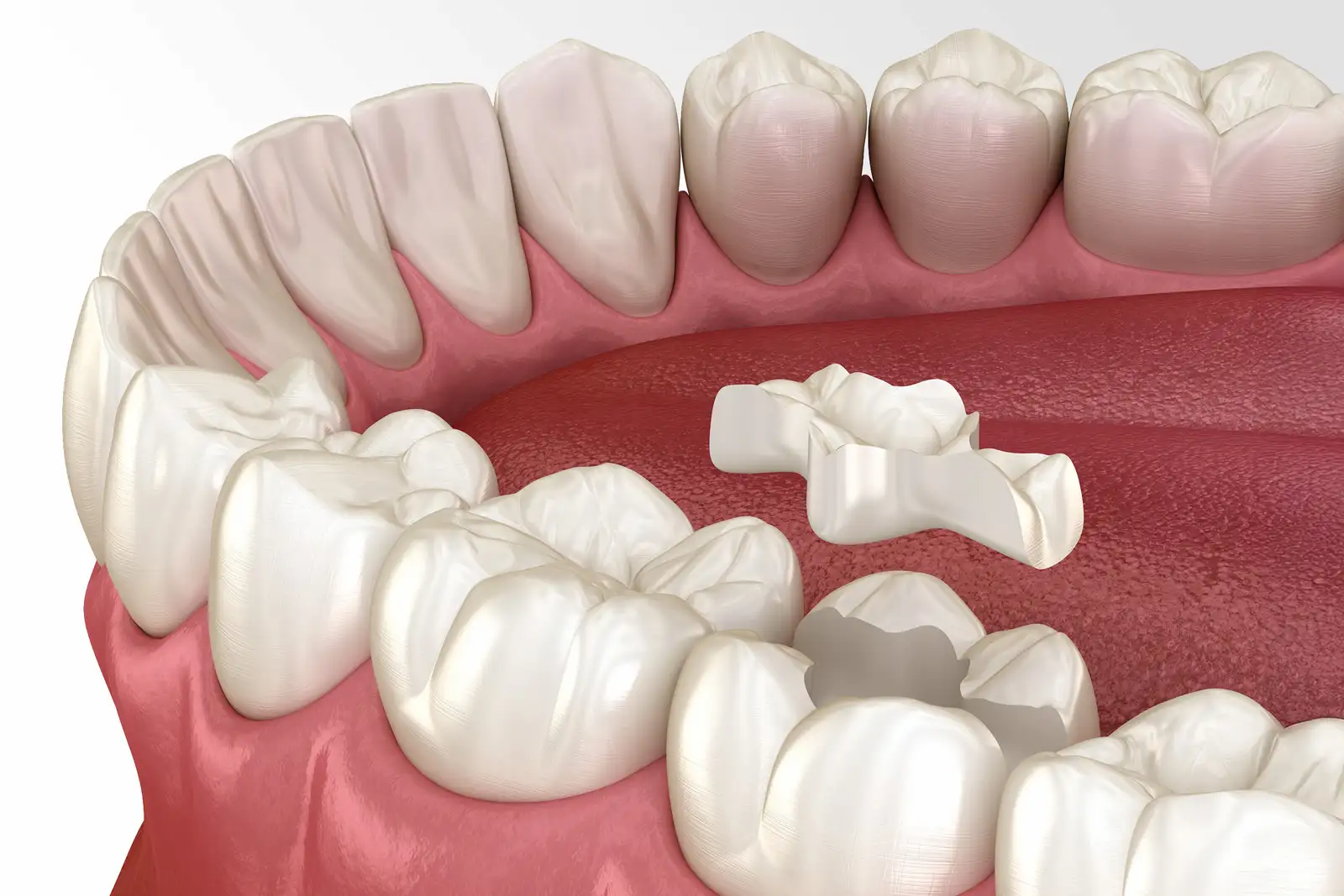Ceramic and composite fillings
For repairing damaged or cracked teeth, ceramic and composite fillings are used as both aesthetic and functional solutions, ensuring the health of the teeth.

Thanks to modern dental materials, fillings completely match the color of natural teeth, providing durability and a natural appearance.
What are ceramic and composite fillings?
Ceramic and composite fillings are used to restore damaged or decayed teeth, restoring their functionality and protecting them from further decay.
After the necessary therapy, the tooth is prepared for filling.
High-quality dental materials represent an aesthetic and safe alternative to old amalgam fillings, providing patients with the highest aesthetic standards.
Ceramic fillings (inlay, onlay, overlay) not only offer the highest aesthetics but are also exceptionally durable and wear-resistant, while composite fillings are made from resin-based materials with added filler particles, allowing for excellent color matching with natural teeth and a minimally invasive treatment.
Advantages of ceramic and composite fillings
- Highest aesthetics – perfectly match the natural color of teeth
- Biocompatibility – safe and free of harmful metals
- Preservation of tooth structure – require less grinding compared to amalgam
- Durability – ceramic fillings can last 10-15 years, while composite fillings last 5-10 years with
proper care - Wear resistance – ceramic fillings are extremely wear-resistant, harder than natural enamel
Who are candidates for ceramic and composite fillings?
Ceramic and composite fillings are recommended for patients who:
- Have teeth damaged by cavities or cracked teeth
- Want a more aesthetically acceptable solution than amalgam fillings
- Have old fillings that need to be replaced due to wear
- Are looking for a long-lasting and sturdy material for tooth restoration
- Have damage too small for a dental crown
Ceramic fillings are usually a better choice for larger tooth damage, while composite fillings are used for smaller restorations, especially on front teeth where aesthetics play a crucial role.
Procedure for placing ceramic and composite fillings
The process of placing ceramic and composite fillings depends on the type of material and the size of the damage.
1. First visit – Diagnosis and treatment planning
- Clinical examination and diagnostic procedures to assess the condition of the tooth
- Selection of the type of filling based on the size of the damage and the patient's needs
Tooth preparation
- Removal of decay and preparation of the tooth for filling
- If a composite filling is used, it is applied in layers and polymerized with light
- If a ceramic filling is used, impressions are taken to make the filling in a laboratory
Filling fabrication and placement
- Composite fillings are placed in one visit
- Ceramic fillings are made in a dental laboratory and permanently cemented to the tooth ina
second visit
Ceramic and composite fillings are a long-lasting, aesthetically appealing, and safe solution for restoring damaged teeth.
Thanks to the excellent properties of ceramic and composite materials, fillings provide high wear resistance, a natural appearance, and long-term protection of the tooth structure from further decay.
Their color and translucency fully mimic the appearance of natural teeth, allowing patients to restore their teeth without compromising aesthetics.
Proper oral hygiene and regular visits to the dentist are essential for the durability of composite fillings.
Frequently asked questions about ceramic and composite fillings
Ceramic fillings are made of dental ceramics, are more durable and resistant, while composite fillings are made of resin-based material and are used for smaller restorations.
Composite fillings are placed in one visit, while ceramic fillings require two visits as they are made in a laboratory.
Ceramic fillings are more durable and wear-resistant, while composite fillings are more flexible and suitable for smaller repairs.
Yes, because they are aesthetically more acceptable, free of heavy metals, and better preserve tooth structure.
Ceramic fillings can last 10-15 years, while composite fillings typically last 5-10 years, depending on oral hygiene and dietary habits.
Ceramic fillings are more resistant to stains than composite fillings, which can change color over time due to the consumption of coffee, wine, and tobacco products.
No, the procedure is done under local anesthesia, so the patient does not feel pain during the removal of decay and placement of the filling.
You can eat immediately after composite fillings, but it is recommended to wait a few hours with ceramic fillings.
Ceramic fillings are more expensive due to the high quality of materials and laboratory fabrication, while composite fillings are a more economical option.
Regularly brush your teeth, use dental floss, and visit your dentist to ensure the longevity of your fillings.
Contact us
Our friendly team will be happy to listen to your requests.
